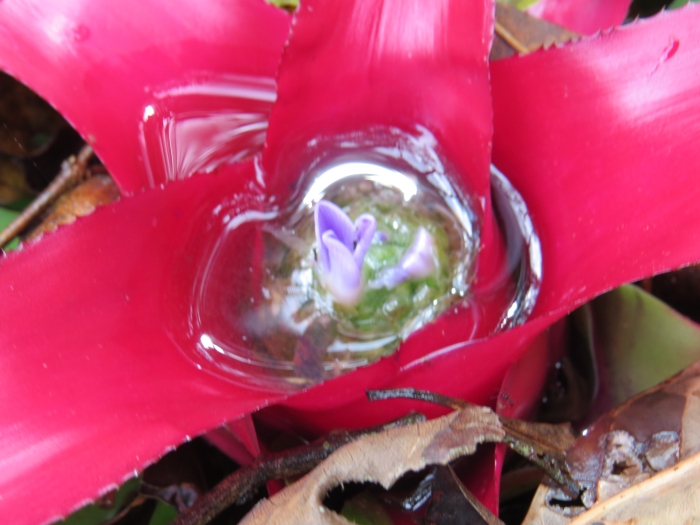Blushing Bromeliad
(Neoregelia carolinae)
Blushing Bromeliad (Neoregelia carolinae)
/
/

Victor Farjalla Pontes
CC BY 4.0
Image By:
Victor Farjalla Pontes
Recorded By:
Copyright:
CC BY 4.0
Copyright Notice:
Photo by: Victor Farjalla Pontes | License Type: CC BY 4.0 | License URL: http://creativecommons.org/licenses/by/4.0/ | Rights Holder: Victor Farjalla Pontes | Publisher: iNaturalist | Date Created: 2021-08-29T11:15:05-07:00 |
























Estimated Native Range
Summary
Neoregelia carolinae, commonly known as the blushing bromeliad, is an evergreen perennial herb native to the Brazilian rainforests, particularly in the Atlantic Forest biome. It is well-adapted to growing as an epiphyte on trees or on the forest floor where light is dappled. The plant typically forms a star-shaped rosette of leaves that can reach up to 18 inches (45 cm) in diameter. The leaves are green with a distinctive reddish hue that intensifies when the plant is about to flower, hence the common name ’blushing’. The inflorescences are not particularly showy, as they are small and nestled within the rosette, but they are surrounded by bright, colorful bracts that can be maroon, red, orange, yellow, or pink, depending on the variety.
Neoregelia carolinae is valued for its striking foliage and the dramatic color change it undergoes prior to flowering. It is often used in tropical and subtropical gardens, as well as in indoor plant collections. This bromeliad prefers bright, indirect light and high humidity, mimicking its rainforest origins. It requires well-draining soil or growing medium and should be watered in the central cup of the rosette as well as in the soil. Overwatering can lead to root rot, so it is important to allow the soil to dry slightly between waterings. It is relatively easy to maintain and can be propagated through offsets. While it is not prone to serious pests or diseases, scale insects and mealybugs can occasionally be a problem.CC BY-SA 4.0
Neoregelia carolinae is valued for its striking foliage and the dramatic color change it undergoes prior to flowering. It is often used in tropical and subtropical gardens, as well as in indoor plant collections. This bromeliad prefers bright, indirect light and high humidity, mimicking its rainforest origins. It requires well-draining soil or growing medium and should be watered in the central cup of the rosette as well as in the soil. Overwatering can lead to root rot, so it is important to allow the soil to dry slightly between waterings. It is relatively easy to maintain and can be propagated through offsets. While it is not prone to serious pests or diseases, scale insects and mealybugs can occasionally be a problem.CC BY-SA 4.0
Plant Description
- Plant Type: Herb
- Height: 1-1.5 feet
- Width: 1-1.5 feet
- Growth Rate: Moderate
- Flower Color: Red
- Flowering Season: Spring, Summer
- Leaf Retention: Evergreen
Growth Requirements
- Sun: Part Shade
- Water: Medium
- Drainage: Fast
Common Uses
Bird Garden, Border Plant, Hummingbird Garden, Low Maintenance, Potted Plant
Natural Habitat
Brazilian rainforest, particularly the Atlantic Forest biome
Other Names
Common Names: Red Heart, Carolinae Neoregelia
Scientific Names: , Neoregelia carolinae, Aregelia carolinae, Billbergia meyendorffii, Bromelia carolinae, Bromelia rhodocincta, Bromelia rhodocincta, Karatas carolinae, Karatas meyendorffii, Karatas olens
GBIF Accepted Name: